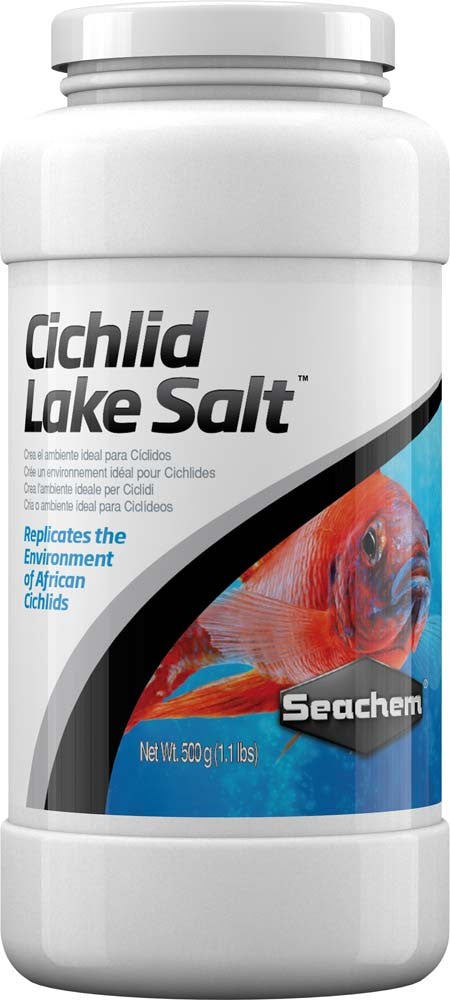Description
Seachem Cichlid Lake Salt
Cichlid Lake Salt™ is a chemically sound blend of salts designed to replicate the natural environment of Rift Lake African Cichlids. It contains all physiologically essential elements such as magnesium, calcium, sodium, potassium, and includes trace components such as iron, aluminum, and iodide.
Although the major Rift Lakes contain basically the same mineral salts, they do so in greatly differing concentrations. Cichlid Lake Salt™ is formulated so that dosages vary depending on the lake of origin and need only be added when setting up an aquarium or with water changes. Many competing products are little more than combinations of Epsom salt and bicarbonate of soda. This will not provide a complete replication of the mineral salts that are contained in the lakes of Africa, in particular calcium and potassium. Seachem’s Tanganyika Buffer™ (pH 9.0–9.4) and Malawi/Victoria Buffer™ (pH 7.8–8.4) should be used to adjust carbonate hardness and pH.
Directions
All doses given for 40 L (10 US gallons).
Dosages are based on DI or RO water; for other water, measure hardness (GH) first, then add according to need. For reference, the Tanganyika dose raises dGH by 8.8 units. The Malawi dose raises dGH by 4.4 units. The Victoria dose raises dGH by 3 units.
We recommend the following GH ranges:
TIPS: Use when setting up an aquarium and when making water changes. To add salt to an established tank, base dose on water being changed. Do not use salt when simply replacing evaporated water. It is best to dissolve the salt in freshwater before use.

